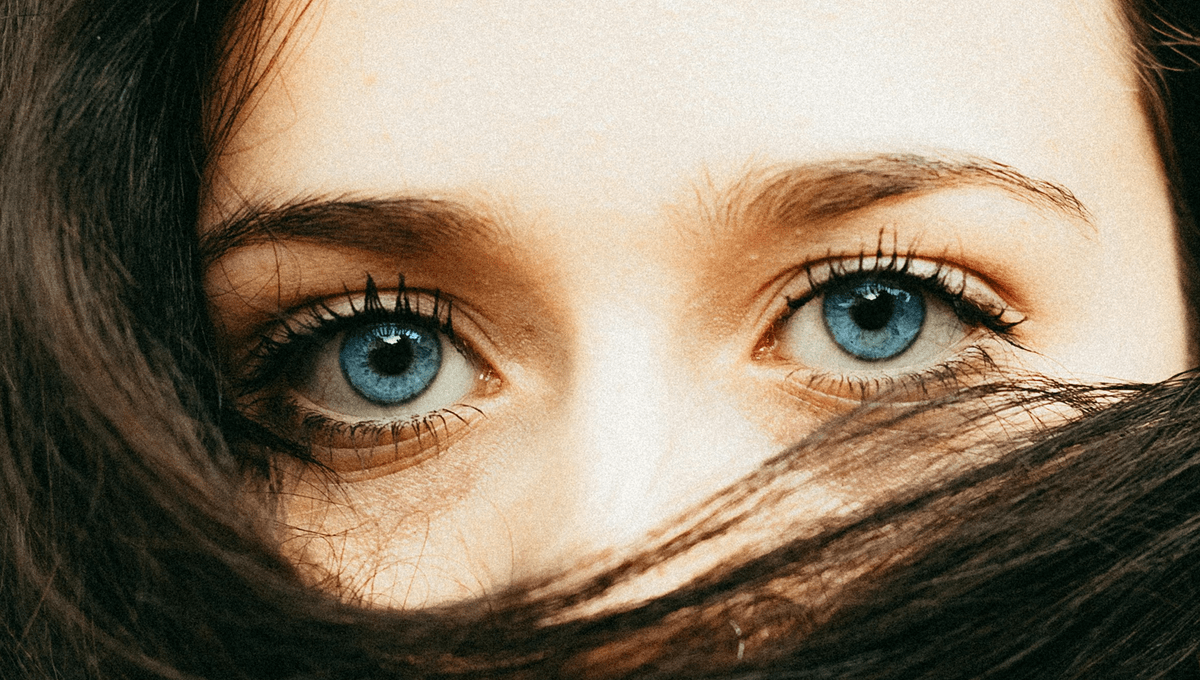What Is The Earliest Evidence For Blue Eyes In Humans?

When Did Blue Eyes First Appear In Humans?
In the history of Homo sapiens, blue eyes just showed up fashionably late. Throughout most of the species' existence, all humans had brown eyes, until a random genetic mutation emerged over 6,000 years ago in a single prehistoric person. This trait eventually spread, giving rise to the millions of blue-eyed people in the world today. Or at least, that's the long-accepted story. But how accurate is it?
To oversimplify a tiny bit, blue eyes are the result of a mutation in the HERC2 gene, which influences the activity of the neighboring OCA2 gene. OCA2 provides the coded instructions for producing a protein involved in the synthesis of melanin, the pigment responsible for the color of skin, hair, and eyes. The mutation doesn't completely "turn off" the OCA2 gene for brown eye pigment. Instead, it dials down its function, reducing melanin production in the iris, essentially "diluting" brown eyes to appear lighter. Strangely enough, blue eyes do not appear that color because of any vibrant pigment, but rather their intricate structure. In blue eyes, light scatters in the front layer of the iris, which is lacking in pigment. Known as the Tyndall effect, this scattering of light causes blue wavelengths of light to be reflected, making the eyes appear blue. It’s a similar effect that makes white snow sometimes seem blue. Eye color is dictated by pigment (or lack of) and the structure of the iris' stroma. This HERC2 gene was first identified in the 1990s by Hans Eiberg, a Danish geneticist at the University of Copenhagen. In a 2008 study, Professor Eiberg and his team dug deeper into the gene by studying the mitochondrial DNA of blue-eyed individuals from Denmark, Jordan, and Turkey. This, the team claimed, was able to show that the blue-eyed gene mutation likely sprang up in a single individual between 6,000 to 10,000 years ago. It didn’t necessarily help humans to survive and reproduce, but it didn’t hinder them either, so it was eventually allowed to propagate widely through the population of Europe and parts of Asia. "From this we can conclude that all blue-eyed individuals are linked to the same ancestor. They have all inherited the same switch at exactly the same spot in their DNA," Professor Eiberg said in a statement. This study is still cited today whenever blue eyes are brought up, but subsequent research has pushed back the timeline it suggested. A 2016 study took a deep dive into the genetics of Ice Age Europe and found the genetic driver of light eye color in Europeans appears “nearly simultaneously in specimens from Italy and the Caucasus” around 14,000 to 13,000 years ago. Then, in 2024, scientists found ancient DNA in the skeleton of a baby who lived and died in southern Italy 17,000 years ago that suggested the individual most likely possessed blue eyes, dark skin, and curly dark brown hair. However, it's key to remember that genetics is immensely complex, even when it comes to something as relatively straightforward as eye color. In reality, eye color is not simply determined by just one gene, but rather by variations in several genes. It’s been noted that variation in at least 10 other genes, not to mention the complicated interactions between these genes, also influences eye color in humans. Likewise, many studies loosely throw eye color into three categories – blue, green/ hazel, and brown – but this can be viewed as an oversimplification. Gaze into a pair of eyes and you'll find they always have a unique blend of different hues, shaded streaks, and unexpected tints, all of which are coded for by a subtle interplay of genes. A few years ago, a lot of media attention was shoveled onto the discovery that Cheddar Man, Britain's oldest near-complete human skeleton at 10,000 years old, likely had black skin and blue eyes. It was a fascinating and timely discovery, but things weren't as straightforward as they seemed. In the supplementary material of the study, the researchers note: “this individual has light or blue/green eye colour, it is not light blue, there are elements of brown/yellow in the eye to give a proposed perceived green colour [...] It is certainly not a brown eyed or clear blue-eyed individual.” It will be impossible to put an exact date on the first person with eyes. Nevertheless, it would be a reasonable guess that blue eyes were a relatively common sight in Europe from around 10,000 years onwards, certainly by the time early farming had reached the continent by around 8,500 years ago. And for the record, there’s no evidence that blue eyes are falling to extinction. Since blue eye color is determined by recessive genetic variants, while brown eyes are controlled by dominant ones, some have mistakenly claimed that blue eyes could eventually disappear from the population. However, it’s estimated that 10 percent of the world has blue eyes, meaning millions upon millions of people carry the genetic variants that are needed to keep the trait in the human population for the foreseeable future. Just like redheads and attached earlobes, blue eyes are a recessive trait that isn’t going anywhere soon.


